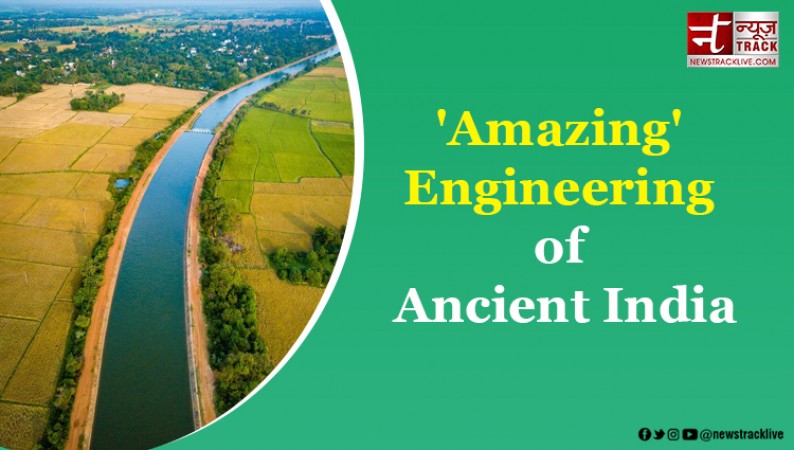
New Delhi: Engineers' Day is celebrated on September 15, the birth anniversary of Bharat Ratna Mokshagundam Visvesvaraya. Mokshagundam Visvesvaraya is remembered as an outstanding engineer, who was born in Muddenahalli, Karnataka. Be it the Krishnaraja Sagar Dam in Mysore or the Tighra Dam of Gwalior, the irrigation system and drainage system of many large areas bear the imprint of Mokshagundam Visvesvaraya.
But, the history of engineers in India is very old, from the period of Ramayana-Mahabharata to Harappan and Maurya-Gupta empires, even in ancient times, India was many times ahead of the rest of the world in this field. Whether it is building bridges on the sea or beautiful temples built by carving rocks, all these present a wonderful example of the skill of ancient India. However, it is ironic that it is not even mentioned in our textbooks. However, today on Engineers' Day, we are going to tell you about such a creation of engineers of ancient India, which still exists and is serving. A dam that has been serving continuously for the last 1850 years and is expected to continue to serve for many more years. It was built in 150 AD. Now you can imagine how many excellent engineers India used to have during that period. We are talking about the Kallanai Dam, also known as 'The Grand Anicut', located in the Cauvery river flowing from Tiruchirappalli to Thanjavur in Tamil Nadu. It was built by the great Chola ruler Karikala. The dam is located 15 km from Tiruchirappalli and 45 km from Thanjavur. The dam was constructed when water was required for irrigation over a large area. The region is also known as 'Chola Nadu', which is a delta region and has also been the cultural stronghold of the Chola Empire.
Let us know that 12,000 labourers from Sri Lanka worked to build this dam on the Cauvery. They had built large walls there to change the direction of water and protect it from floods as well as irrigation systems. For the construction of this dam, a huge stone was given a special look, which is 1080 feet (329 meters) long and 60 feet (20 meters) wide. After this, this stone was placed in the middle of the mainstream of the River Cauvery. Through canals, the river water was then transported to the delta areas, so that agricultural production would increase. However, in today's era, its research is also difficult because, after the arrival of the British, many structures have been built around it. It is a kind of 'check dam', which is made of stones or concrete. By making such a barrier, the water stream is sent to distant villages. Initially, irrigation was arranged in 69,000 acres from this Kallanai dam, which has now increased to 10 lakh acres.
Civil engineering experts also say that its original design is unique, its masonry is a bit crooked. Stones have been installed in it, making the shape of a slope. Along with this, there is an irregular casting from front to back. Through this dam, the water of the River Cauvery was transported to the Kollidam River. For this, a small stream was used, which connected the two. When the water level in the river rose, the Kollidam river would widen. Due to this, it used to go towards the slope along with being faster and in a straight direction. In the language of civil engineering, it became a 'flood carrier'. In the event of floods, the entire water through Kollidam used to go into the sea and the crops of the farmers were not damaged. Expert Chitra Krishnan found that this dam worked well because instead of controlling all the natural forces, it only gave a new shape to the process of sedimentation and the stream of water.
Kallanai Dam is actually an engineering marvel. In order to increase mass and gravity, large stones were first poured into the river, after which a base of masonry was made with small stones on top of them, after which a wall was erected above it. The British were so surprised by this dam that they engaged their military engineers in its research. Sir Arthur Cotton imitated this and built a small dam on the river, a branch of the Cauvery, in the 19th century. You can also go to Tamil Nadu to see this dam. The nearest railway station is Lalgudi, which is located at a distance of 4 km. This structure is a befitting reply to all those who do not tire of claiming that Indians were rude and uneducated and were taught everything by people from the outside.
Rahul Gandhi not ready to be Congress President, who will take over party command?
Engineer's Day 2022: PM Modi conveys greetings to all engineers